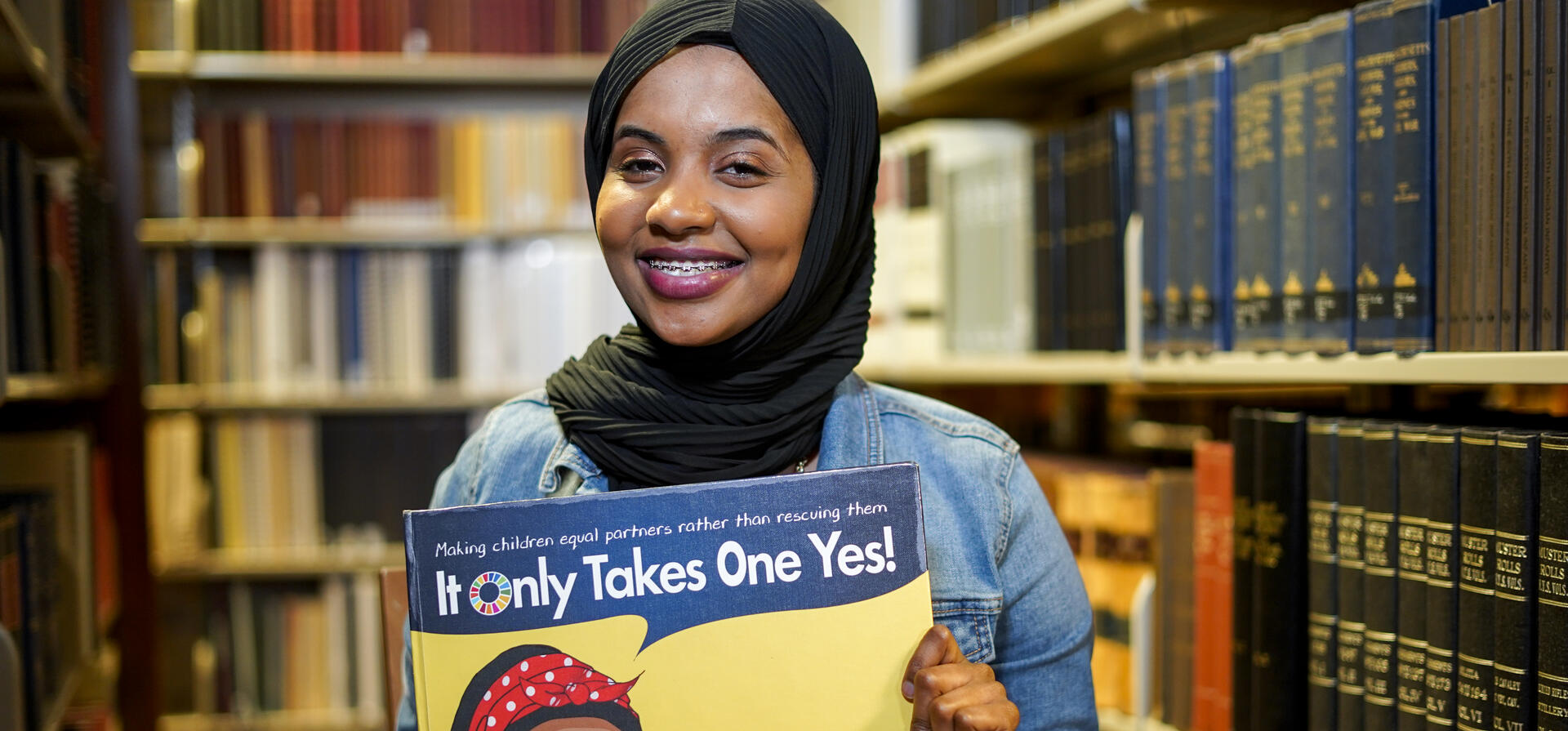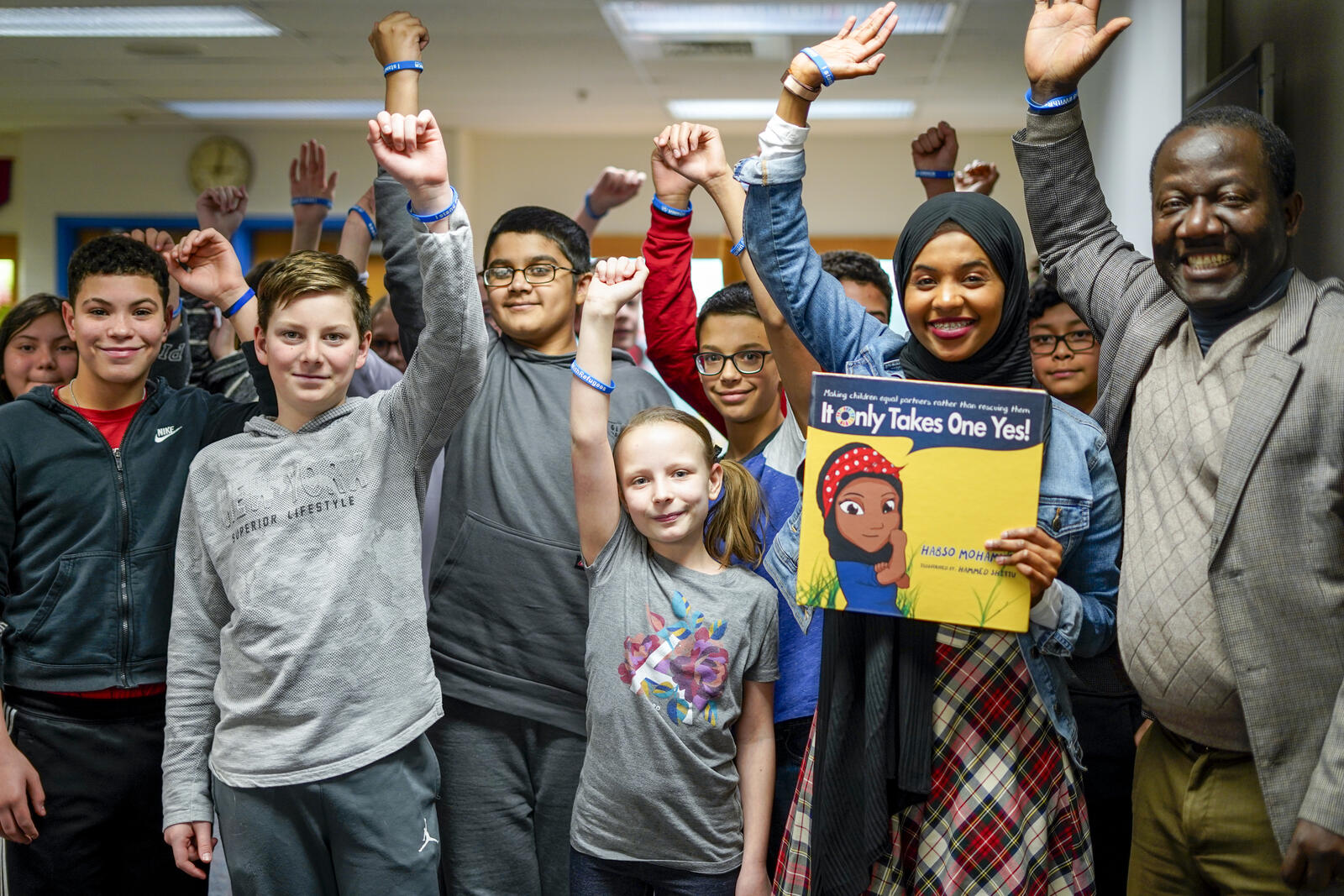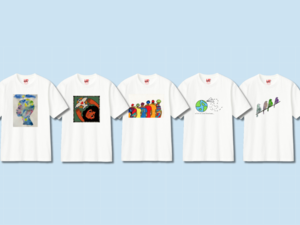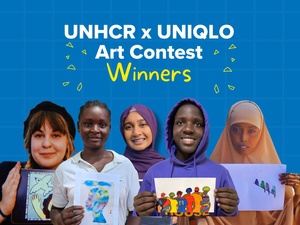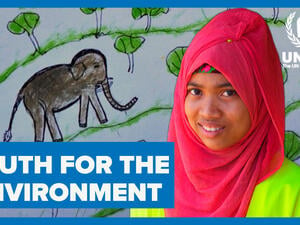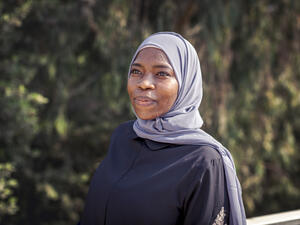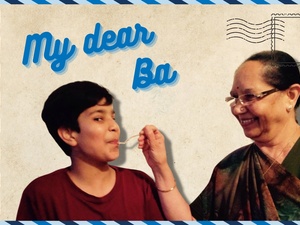Former Somali refugee inspires children with illustrated book
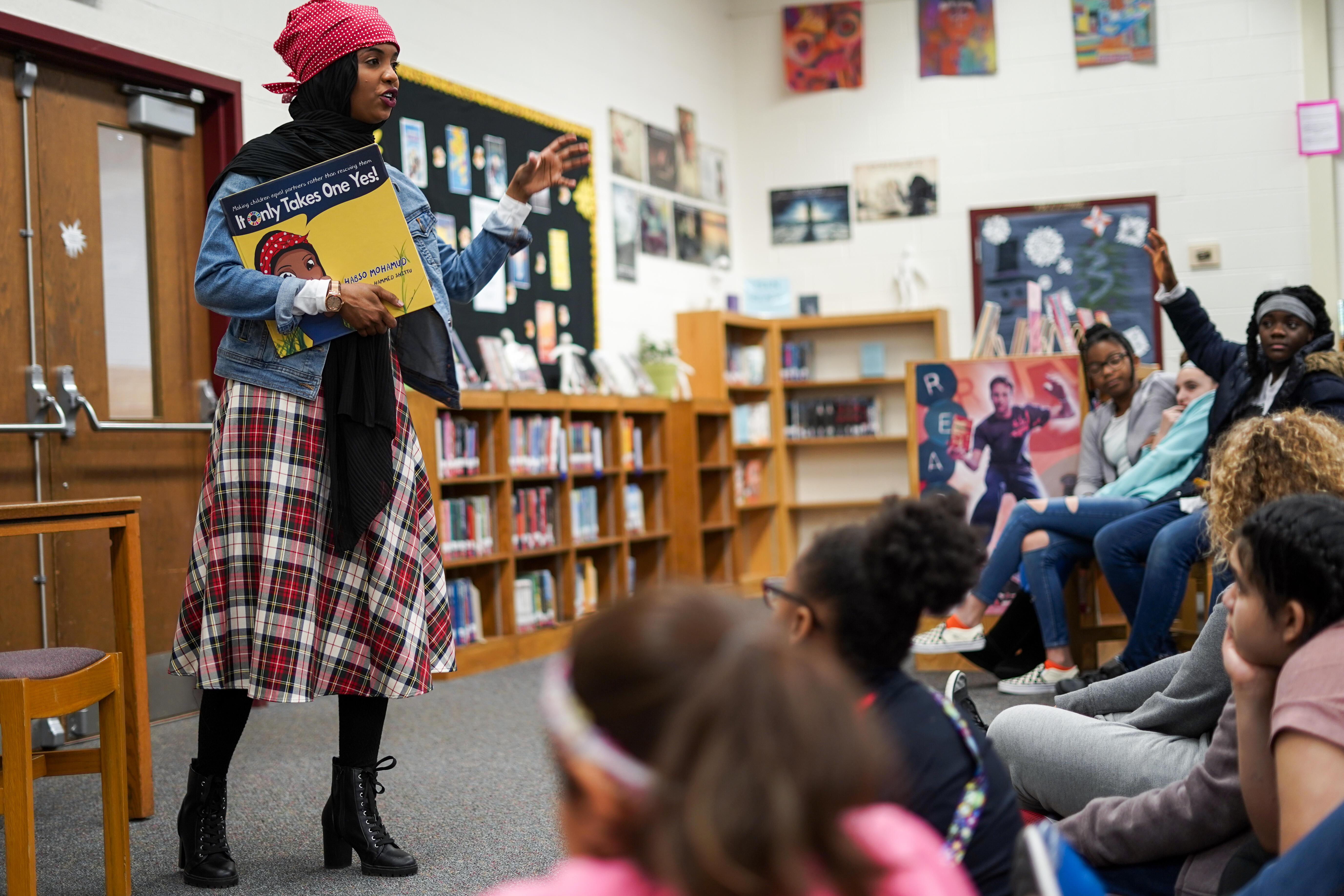
Habso Mohamud answers questions during a book reading at a school in Washington, D.C.
“I wish I was the queen of the jungle,” dreams little Nasra, the protagonist of the children’s book It Only Takes One Yes. As queen, she would then help the homeless, feed the hungry, and make books grow from trees so that everyone could read.
Yet what Nasra discovers is that she does not need to wait to make positive change. “It has always been in my heart,” she realizes. “Here and now is when I should start.”
The mind behind Nasra is Habso Mohamud, a 24-year-old former refugee from Somalia. Habso’s real life is very similar to Nasra's fictional one, and she shares both stories with schoolchildren at readings across the United States.
Habso is clear on the message she wants to transmit: “Don’t give up on yourself and don’t give up on your dreams, no matter where you are or what circumstances in life that you might come across.”
"They didn’t make that choice to be a refugee.”
Habso herself had to overcome many obstacles. Growing up in Dadaab refugee camp, in Kenya, she had to walk 45 minutes to get to school every day. Even so, she would never miss a class, even when she had no money to buy food to make it through the day.
“The love of education really came from when I was in the refugee camp,” Habso explains. “I wouldn’t miss out on those opportunities even though they were far from my home.”
After being referred by UNHCR, the UN Refugee Agency, Habso, her parents and nine siblings were resettled in the United States in 2005. Despite growing levels of worldwide forced displacement, very few refugees get a chance to be resettled today – of the estimated 1.2 million refugees in need of resettlement in 2018, only 55,692 were actually resettled.
The family first landed in New York City in the middle of the summer. “I didn’t think we were actually in America,” she recalls. “I was like, ‘where is the snow?’” But she did get to enjoy – and endure – snow for many years, when the family eventually settled down in the northern state of Minnesota.
Adapting to a new context was not easy for 10-year-old Habso. She often felt anxious and depressed. “Memories from the refugee camp were coming back to me,” she says. Starting when she was 12 years old, Habso went to therapy for six years, even spending some periods in the hospital.
“I just wanted to be like every other kid,” she says. But speaking out about mental health was a stigma in her community.
By telling her story, Habso wants to challenge stereotypes about refugees and about mental health.
“We shouldn’t take [refugees] as a burden,” she says. “We should give them every opportunity that there is out there to make sure that they have another life, because they didn’t make that choice to be a refugee.”
“Don’t give up on yourself and don’t give up on your dreams."
Habso’s commitment goes beyond the pages of her book. She makes sure she makes herself available to children on social media, email and in person to answer questions, encourage and support them.
Every time she does a reading, Habso ties a red bandana with white polka dots over her headscarf to match Nasra, the main character in her book.
Standing before a group of about 20 children aged 11 and 12 at a Washington area school on a recent wintry morning, Habso read out loud from a special extra-large hard-cover copy of the book, so the audience could better see its illustrations. A small girl with a blonde ponytail named Bridget listened intently from the front row.
On page seven, Habso stopped to ask a student to read some text out loud: “We are the agents of change.”
When Habso finished reading, the children wanted to know more about her life. What were the houses in the refugee camp made of? What was the hardest thing about living in a refugee camp? What’s your favorite thing about America?
After the reading was over, young Bridget shyly approached Habso, holding back her tears. Appearing unsure of what to say, she just embraced Habso in a massive hug.
Habso talked to the young girl and asked about her dreams. Bridget told her she wants to make inventions that help the environment as Habso inscribed a copy of It Only Takes One Yes for her: “To Bridget, You’re smart, you’re strong, and you can change the world. – Habso.”

